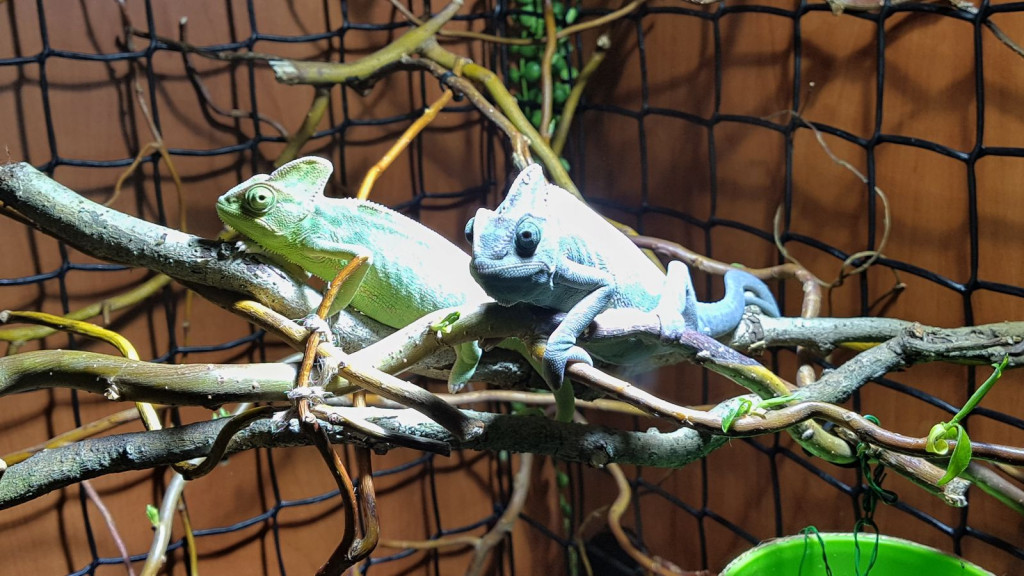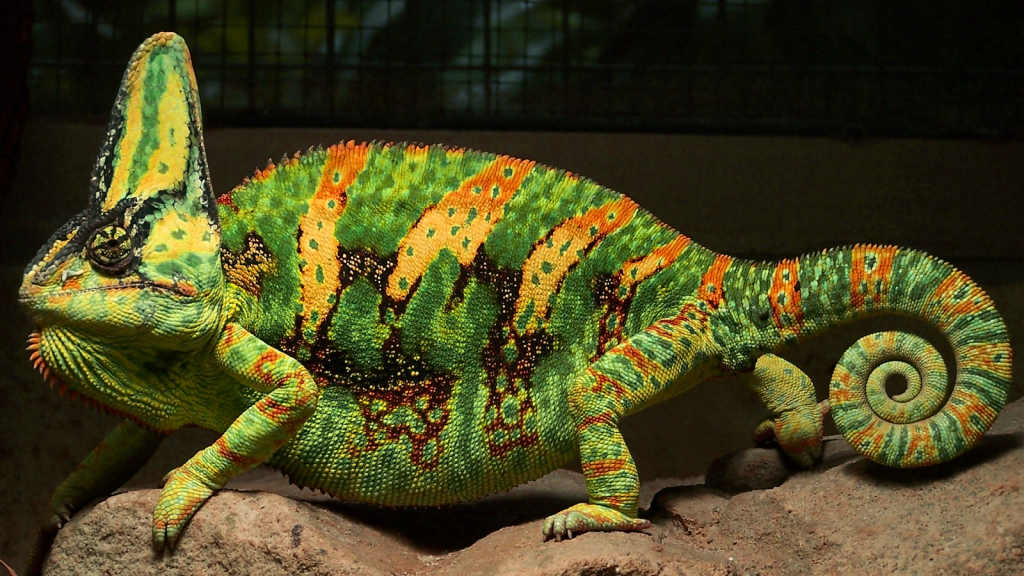Breeding a Veiled chameleon is definitely more demanding than, for example, breeding a corn snake, but it is still not impossible. Unlike other species of chameleons, this one is the most commonly bred. But before you get one, look at what to expect.
This article deals with the care and breeding of the Veiled chameleon.
The equipment of the terrarium itself for the Veiled chameleon, such as heat source, substrate, branches, plants and more, can be found in this article.
Water for the Veiled Chameleon:
The chameleon must have access to fresh water in the terrarium all the time. There are basically 3 options.
1: Lots of chameleons learn to drink from a bowl. Therefore, place a bowl of water in the terrarium.
2: by misting the plants or/and the walls of the terrarium. Chameleons drink (lick) water from them. You can cut manually or use one of the misting systems. However, make sure that the mist does not run over the entire area of the terrarium. The chameleon should be able to hide during automatic misting if he feels the need. You also shouldn't spray water on the place where chameleon basks. Spraying water directly on a warm chameleon is also not a good idea.
It is enough to mist twice a day (only lightly), adults can do with misting once a day. In the terrarium, the moisture should not stay for a long time after misting to prevent the formation of mold.
3: You can also try to give the chameleon a drink, for example, from a syringe or a pipette.
Temperature in the terrarium for the Yemeni chameleon:
The temperature should be in the range of about 22-35° C from the coldest to the warmest place with local heating. The terrarium should not be placed in direct sunlight so that the temperature does not fluctuate uncontrollably.
Humidity in the terrarium for the Yemeni chameleon:
It is sufficient to keep the humidity in the range of about 55 - 65%. Chameleons are not particularly sensitive to humidity in the terrarium. Keep the hygrometer located at the top of the terrarium and away from the local heating.
Light, heating and substrate:
What king of light, heat source and substrate for a chameleon can be found in the article Terrarium for the Yemeni chameleon.
Feeding the Yemeni chameleon:
Chameleons feed on crickets, cockroaches, locusts, grasshoppers and meal worms here and there. In addition, chameleons also eat other insects, such as moths, spiders, flies ... In the summer, it is possible to get insects directly in the meadow by sliding a net. Just make sure that the meadow is not chemically treated and that we do not let poisonous or stinging insects, such as bees and wasps, into the terrarium. Feed insects must be alive. The size of the food must, of course, be adapted to the size of the chameleon. Chameleons also eat the blossom of plants, such as dandelion or hibiscus.
For an adult chameleon, about 5-10 large crickets once a day or other insects in similar amount will suffice. In case of young chameleons, we pay attention to overfeeding, they should be fed about 2-3 times a day with 5-10 small crickets or a similar amount of other insects. Adult chameleons (from about 10 months of age) already know when they have enough food.
As for vitamins and calcium, in case of young chameleons, we coat insects in vitamins and calcium once a week for about half a year. For adults, once every 14 days in calcium and once a month in vitamins is enough. If the chameleon has quality insects and quality light, there is no reason to coat insects more often in vitamins and calcium.
Tolerance to other chameleons:
If you keep chameleons in separate terrariums, they should not be able to see each other, it stresses them. They are quite individual in nature, some are more friendly and sociable, others less so.
Males should not be bred in one terrarium, they are usually hostile to each other. Females can be bred in one larger terrarium, but preferably from a young age.
My two females don't have the slightest problem with each other...

Nature of the Veiled chameleon:
Chameleons are not social creatures. They are moody, shy and easily succumb to stress. They cannot be tamed in the true sense of the word, they will learn to get on your hand and take food from it. However, they will not actively search for your company. They prefer their peace and quiet.
Male and female:
Males are much larger, heavier and more colorful than females. Males have a larger helmet. You will recognize the female and the male at first sight.
Choose a male or female chameleon?
Generally, a male is recommended for beginners. Females suffer more from diseases, are more prone to stress, tend to have so-called false clutches (they lay eggs even if they have not been with a male) who are at greater risk of holding eggs inside and can then die. Caring for a pregnant female for a beginner is also not an easy task.



